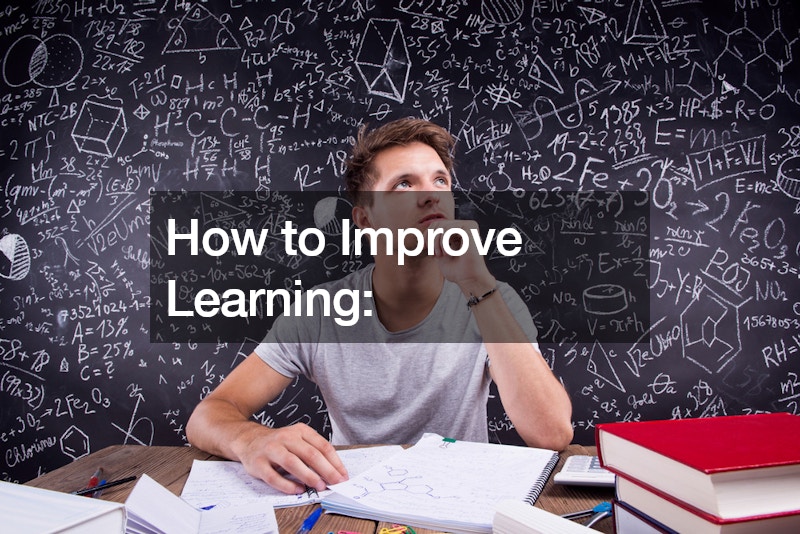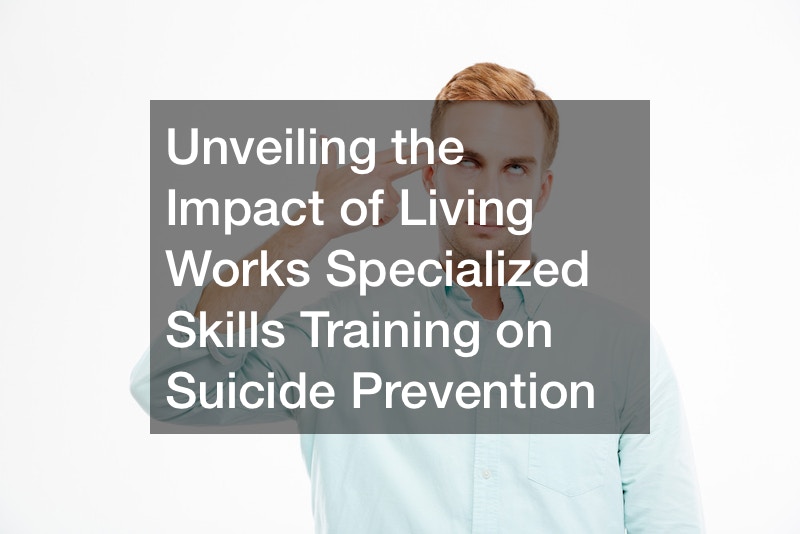In the quest to improve learning, educators, students, and lifelong learners alike are consistently seeking strategies that enrich understanding and retention of information. Mastering educational concepts isn’t solely about time spent with textbooks. It involves a comprehensive approach that intertwines health and wellness with effective learning techniques.
In this enlightening journey through educational and health concepts, we’ll explore how various health concepts and targeted learning strategies can catalyze intellectual growth and enhance cognitive function. Whether you’re a student aiming for academic excellence or a professional enhancing your knowledge base, the synergy between a healthy body and a nurtured mind cannot be overstated.
The Importance of Early Education

The formative years of childhood lay the foundation for lifelong learning and development. The research underscores the profound impact that the best early childhood education programs have on a child’s academic and social trajectory. Engaging young minds through play-based learning, hands-on experiences, and nurturing interactions can jumpstart cognitive abilities and promote emotional resilience.

Quality programs in early education are not just about preparing for formal schooling; they are about setting the stage for overall well-being and success in life. Transitioning from the foundational years into the realm of structured education, the role of after school programs becomes increasingly significant. These programs provide essential support structures for students to reinforce what is learned during the school day.
They are platforms for academic assistance, social development, and exposure to new interests. Furthermore, after school programs often offer opportunities that might not be available during regular school hours, such as specialized art classes, sports, and STEM activities, contributing to the development of well-rounded individuals.
Holistic Learning Integration
Holistic learning integration goes beyond the traditional focus on academic subjects, encompassing a student’s physical, emotional, and social facets to improve learning outcomes. It understands that a child’s emotional state and physical health are just as crucial to their schooling as their intellectual abilities. By incorporating practices that encourage mindfulness, emotional regulation, and resilience, holistic education builds students who are more engaged and capable of navigating the complexities of life.
In this approach, it also stands to reason that attention to healthcare, particularly oral health, has an overarching impact on a student’s ability to perform and thrive academically. Regular dental cleaning, for instance, plays a pivotal role in maintaining overall health. Students with good oral hygiene are less likely to miss school due to dental pain and can concentrate better on their studies. Furthermore, dental health reflects in one’s confidence and social interactions, which are integral to collaborative learning and self-expression.
Moving deeper into the realm of oral health and its implications on learning, orthodontic treatments such as braces improve the alignment and function of teeth and can instill a positive self-image and better speech articulation. Braces treatment during the school years is a common intervention that can have far-reaching benefits for a student’s social and educational experiences. Aligning teeth properly can prevent future dental issues that might distract or hinder a student from focusing on their educational goals.
Synergizing Health and Education
Synergizing health and education means actively blending wellness initiatives with learning objectives to create an environment where students thrive. This synthesis acknowledges that educational success is not solely a product of cerebral activities but also of a well-nourished and physically active body. Schools can mitigate issues like chronic absenteeism and limited attention spans by implementing programs that prioritize mental and physical health, ultimately boosting academic performance.
Equally, by offering nutrition education and physical activity breaks, schools empower students with the tools they need for both academic pursuits and life. In particular, some health interventions, such as chiropractic procedures, have been noted for their potential to improve concentration and general well-being. Chiropractic care, which involves diagnosing and treating mechanical disorders of the musculoskeletal system, especially the spine, can lead to improved posture, reduced pain, and enhanced nervous system function.
For students, this could translate to better focus, less discomfort during long study sessions, and an overall improvement in their school experience. With reduced physical barriers to concentration, students may find it easier to engage fully with their educational material. Furthermore, healthcare for students becomes even more specialized when considering adolescent and adult learners who may be facing hormonal imbalances. Treatments such as testosterone replacement therapy (TRT) could play a significant role in the life of a student who has been diagnosed with a hormone deficiency.
Low testosterone levels can lead to fatigue, decreased motivation, and mood disturbances, which are all detrimental to the learning process. With proper medical oversight, TRT can help replenish testosterone levels, potentially leading to enhanced energy, improved mood, and a heightened capacity to handle the rigors of academic life. It’s important to highlight, however, that such treatments should only be pursued following thorough evaluation and under the supervision of a qualified healthcare provider.
Optimizing Learning Environments
Creating optimal learning environments is a key element in improving the educational experience. Such environments are structured to consider the varying sensory preferences and learning styles of students, aiming to deliver personalized experiences that maximize comfort and minimize distractions. Carefully designed classrooms and study spaces play a critical role in improving learning outcomes by incorporating ergonomic furniture, adequate lighting, and acoustics, which facilitate focus and reduce fatigue.
In addition to ergonomic considerations, the physical climate in which students learn has a profound effect on their cognitive abilities. Climate controlled self storage units exemplify how temperature and humidity can be regulated to preserve sensitive items. Similarly, a learning environment that maintains a consistent temperature can help to keep the mind alert and protect learning materials from becoming damaged due to environmental conditions.
Effective learning spaces should also be flexible and adaptive, allowing for the physical reconfiguration to support various educational activities, from quiet study sessions to collaborative group work. By incorporating elements of climate-controlled self-storage, modern learning environments can provide a safe and conducive atmosphere tailored for educational excellence. This fusion of comfort and functionality illustrates the innovative ways educational spaces are being transformed to improve learning and can extend to the protection and storage of educational resources over time.
Wellness and Education Alignment
Aligning wellness and education is paramount in nurturing not only academically proficient individuals but also healthy and well-rounded members of society. This alignment goes further than integrating physical health into the curriculum; it encompasses the total well-being of students, including their psychological and social health. Strategies such as implementing regular physical education classes, mindfulness exercises, and social-emotional learning sessions are indicative of the movement toward a more holistic educational experience.
In the same vein, addressing specific health concerns such as varicose veins might seem like a departure from typical educational considerations, yet it has its place in the larger health and learning matrix. Varicose veins treatment options are especially relevant for educators and older students who spend a considerable amount of time on their feet. The discomfort and health issues associated with varicose veins can lead to decreased concentration, absenteeism, and even lowered self-esteem, which, in turn, impede the learning process.
Consequently, bringing awareness to treatment options, such as compression therapy or minimally invasive surgeries, can improve learning outcomes by ensuring that educators and learners are in optimal physical condition to engage with the academic material. The recognition of such interconnections underlines the importance of a systems-thinking approach in education. Students and educators are better positioned to succeed academically when they are provided with resources and support to manage health issues. Integrating health wellness into the fabric of educational strategy is, therefore, not just a luxury but a necessity for the formation of robust learning environments.
Identifying Special Needs in Learning

The identification of special needs within the educational system is a crucial aspect of inclusive education. It ensures that every student receives a tailored educational experience that accommodates their unique learning styles and challenges. The process often involves a detailed assessment by professionals who are trained to recognize various learning disabilities and special requirements.
These can include dyslexia, attention-deficit/hyperactivity disorder (ADHD), autism spectrum disorder (ASD), and a variety of other cognitive or physical challenges that can impede standard academic progress. Through personalized learning plans, assistive technologies, and supportive classroom environments, educators can improve learning outcomes for students with special needs. However, the journey to receive appropriate accommodations is not always straightforward.
Parents and guardians may find it necessary to advocate for their child’s educational rights, seeking the guidance of a special education attorney. Such professionals specialize in navigating the legal framework surrounding special education to ensure students get the support and resources they are legally entitled to. Their role is vital in advocating for the rights of students, which ultimately contributes to improving learning experiences and outcomes.
Data-Driven Educational Insights: Maximizing Learning with Analytical Approaches

In the age of information, educational strategies are increasingly being shaped by data-driven insights, allowing educators to make informed decisions that consistently improve learning outcomes. Schools can tailor their instructional methods and interventions more effectively by employing analytical approaches to evaluate academic performance, classroom dynamics, and even student wellness. The application of data analytics in education extends beyond just measuring scores and includes understanding learning behaviors, predicting trends, and personalizing educational content to fit the needs of individual students.
The intricate connection between sports and education provides a unique context for data analytics. Sports data analytics involves the evaluation of statistics and performance metrics, which can inform coaching methods, training regimens, and team strategies. Similarly, when applied to educational athletics programs, the insights gleaned from sports performance data can be utilized to enhance team dynamics, student fitness, and even cognitive skills such as strategic thinking and decision-making.
Data can reveal patterns in physical performance that, when addressed, may lead to improved athletic and academic outcomes for student-athletes. By bridging the gap between sports and academic analytics, educators and coaches are better equipped to foster environments where students can excel in both arenas. This symbiosis is key to developing well-rounded students who benefit from the life lessons and physical health that sports impart and the intellectual growth provided by their academic pursuits.
Stress Management for Better Learning
The profound impact of stress on students’ cognitive capabilities necessitates incorporating stress management strategies within the academic framework. Chronic stress can impair memory, reduce concentration, and ultimately hinder learning. As such, schools are taking a proactive stance by integrating stress-reducing techniques into their curricula, such as mindfulness meditation, yoga sessions, and stress-relief workshops.
Through these interventions, students learn to manage their stress more effectively, leading to an improved mental state conducive to learning. With stress kept at bay, the capability to retain information and apply knowledge increases, creating an atmosphere where students can flourish academically. In essence, effective stress management is key to creating an environment that can improve learning outcomes for students across the board.
Social Activities for Holistic Development
Social activities in educational settings are essential for the holistic development of students, as they provide a platform to foster social skills, emotional intelligence, and collaborative learning. By engaging in a variety of group activities, including clubs, sports teams, and student-run organizations, learners can develop critical life skills such as leadership, team spirit, and communication. The significance of these social activities extends beyond mere interaction. They cultivate empathy, resilience, and adaptability among students, traits that are invaluable in both personal growth and academic success.
Moreover, these experiences serve as a practical application of classroom learning, allowing students to contextualize their academic knowledge in real-world situations. Integrating social engagement with academia can significantly improve learning outcomes by reinforcing concepts through experiential learning, which often leads to deeper understanding and retention. Social activities also provide a break from the rigorous academic schedule, giving students the opportunity to relax, recharge, and nurture their mental health, which is a critical component of effective learning strategies.
The pursuit of improving learning experiences is multifaceted, requiring a harmonious blend of health awareness, optimized environments, inclusivity, data integration, stress management, and social activity engagement. Each component contributes to a sturdy educational structure capable of supporting students’ unique needs and cultivating an atmosphere where intellectual and personal growth can thrive. By continuing to evolve these strategies, educators and policymakers can significantly improve learning outcomes for students, preparing them for the complex demands of the future.



